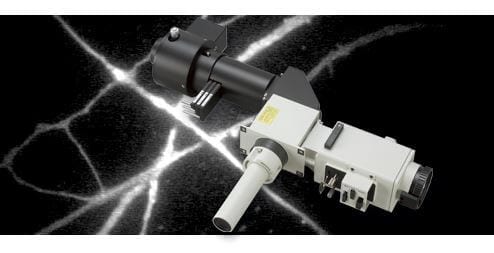
Enables single molecule visualization, allowing dynamic observation and functional analyses of both in vitro and living cells
Illuminator for TIRF Applications
Newly developed motorized laser TIRF illumination unit allows laser incident angle adjustment, shutter control and switching to widefield fluorescence excitation with the control pad or NIS-Elements software. The laser incident angle can be stored with a single touch of the control pad button. Stored laser incident angles can be easily reproduced. This enables alternate time-lapse recording between fluorescence and multi-wavelength TIRF images.
The extremely high S/N ratio created by Nikon’s laser TIRF imaging system makes it possible to observe single molecules. Thanks to Nikon’s proprietary Noise Terminator mechanism, the system can also produce breathtaking epi-fluorescence images with a high S/N ratio.

Nikon’s high NA TIRF objectives make it possible to introduce laser illumination at incident angles greater than the critical angle (θc) resulting in TIRF that creates an evanescent wave immediately adjacent to the coverglass-specimen interface. The evanescent wave reaches maximally a few hundred nanometers into the specimen and its energy drops off exponentially. Nikon’s laser TIRF system utilizes this evanescent wave to excite single molecules in the thin section in contact with the coverglass. Because the specimen is not excited beyond the evanescent wave, this imaging system can produce fluorescence images with an extremely high signal-to-noise (S/N) ratio.